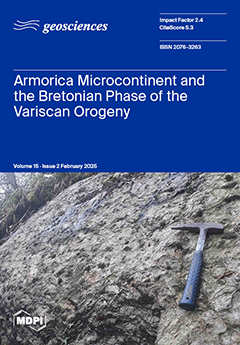The Vali–Janlou kaolin deposit is located in the northern part of the Urmia–Dokhtar magmatic belt, central-northern Iran, and is hosted by middle Eocene rhyodacitic volcanic rocks. The Vali–Janlou kaolin deposit is one of the most important sources of raw material for ceramics industries in Iran. No trace element geochemical characterizations of this deposit have been conducted in detail before, and this is the main objective of the current research work. Kaolinite and quartz are the major mineral phases present in this deposit, accompanied by some minor phases like illite, rutile, pyrophyllite, dickite, alunite, diaspore, and chlorite. The calculation of mass balance changes revealed that the kaolinization of the rhyodacitic rocks was accompanied by the enrichment of Sr, Zr, Hf, Ta, Nb, U, Th, Y, La, and Pr, leaching–fixation of Sm, Nd, and HREEs, and depletion of Rb, Cs, Ba, Pb, V, Cr, Zn, Eu, and Ce. The behavior of trace elements during kaolinization was controlled by factors such as variation in the pH and temperature of the hydrothermal fluids, the residual concentration, and the presence of mineral phases resistant to alteration. The occurrence of negative Eu anomalies during kaolinization indicates plagioclase destruction by high-temperature hydrothermal solutions and also the liberation of Eu
2+ during a decreasing intensity of hydrothermal alteration. The presence of diaspore, dickite, and pyrophyllite together with the differentiation of HREEs from one to another, the occurrence of robust negative Ce anomalies, the strong positive correlation between P
2O
5 and LOI, and geochemical parameters like Ce + La + Y, Nb + Cr, Rb + Sr, and Y/Ho are all indicative of the effective role of hypogene processes in the evolution of this deposit.
Full article





